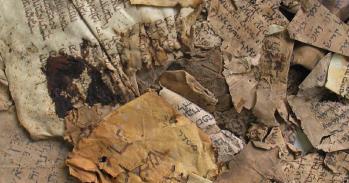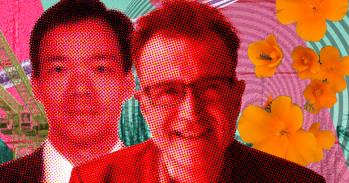
A rare Tibetan manuscript - a treasure that had remained hidden for centuries - set in motion a journey by Hildegard Diemberger that was to bring alive the still-unfolding story of a 15th-century Tibetan princess.
A rare Tibetan manuscript - a treasure that had remained hidden for centuries - set in motion a journey by Hildegard Diemberger that was to bring alive the still-unfolding story of a 15th-century Tibetan princess.
‘From time to time anthropologists unearth surprises that would rank on anyone’s register as ‘discovery’. At the centre of this fascinating account is just such a discovery ...Dr Diemberger has made her own translation of the biography the centre of this book, and it is absorbing reading. She brings it alive through the directness of her language.
Professor Marilyn Strathern
I first heard tales of the remarkable princess Chokyi Dronma – famed for her daring exploits, cultural and social innovation, and unusual powers – during long evenings spent in the Tibetan monastery of Samding over a decade ago. The monks told me how she had miraculously founded the monastery in the 15th century and how her spiritual leaders had revealed that she was the human embodiment of a deity they gave the title Dorje Phagmo. They showed me her image among the mural paintings that decorated the newly reconstructed monastery and explained how, after her death, her disciples recognised a young girl as her reincarnation, so commencing a lineage of female incarnations that is recognised today.
Two years later, in New York, the legendary scholar of Tibetan studies Gene Smith showed me a copy of the biography of the same princess recorded by her disciples in the wake of her death. It was an astonishing discovery: Leonard van der Kuijp, Professor of Tibetan and Himalayan Studies at Harvard, had been able to reproduce this rare Tibetan text from an archive in Beijing. Coming across the story of the life of this extraordinary woman was like finding a treasure that had remained hidden for centuries. It was a fascinating narrative – vibrant and unexpectedly human – and one that had become the basis for innumerable other stories, genealogical accounts, myths and rituals.
Tantalisingly, the manuscript was incomplete – the final pages were missing. It was in attempting to reconstruct details of Chokyi Dronma’s life, her mysterious and untimely death at the age of 33 in a remote and holy area of south-eastern Tibet, and her disciples’ search for her reincarnation that was to lead me not only across Tibet but also amazingly close to home: to a treasure-trove of rare Tibetan manuscripts in the University Library in Cambridge and the British Library in London.
The tale unfolds
With funding from the Arts and Humanities Research Council (AHRC), and under the guidance of Professor Caroline Humphrey in the Mongolia and Inner Asia Studies Unit (MIASU) of the Department of Social Anthropology, my adventure began by travelling the Tibetan landscapes with the text in hand, looking for her ‘places’ and her relics, including her long-lost skull. I found the ruins of the palace where she was born and the palace where she lived as a married woman, met the monks who now live in the monastery where she was ordained, stared in amazement at the iron-chain bridges and temples built by her masters with her support, searched for the traces of the water channels she built in the arid plains of Porong and visited an early Tibetan printing house that was indirectly part of her legacy in Gungthang.
The manuscript led me into the life of Chokyi Dronma, the rebellious and holy daughter of the King of Gungthang in south-western Tibet. Born in 1422, she was a clever and precocious child, said to be able to read and write by the age of three.
At 16 years of age, the princess was married out of the kingdom to cement a strategic relationship between allies. But four years later, suffering the tragedy of the death of her infant daughter, she renounced her royal life to become a Buddhist nun and a mystic. She not only persuaded one of the highest spiritual teachers of her era to give her full monastic ordination (which is often believed to be unattainable by a woman), but also established orders for other women practitioners and became so revered that she was officially recognised as one of two principal spiritual heirs to her main master.
Legacy of a princess
In my research I discovered that Chokyi Dronma’s relics, stories and images still have a great significance for the Tibetans, who are currently reviving her tradition, assembling all that has survived the ravages of the Cultural Revolution. I encountered her legacy among begging nuns who have managed to restore their nunnery, among the monks who looked for her images to re-paint the walls of their monastery, and among lay and monastic communities who have been trying to reassemble the texts and restore the sacred dances of her tradition. I saw her in the excited eyes of monks and nuns, but also nomads and farmers, holding in their hands copies of her biography, which has now been returned to Tibet to be made available for the people and the monasteries that currently embody the Dorje Phagmo’s tradition.
I discovered that the incarnations of Dorje Phagmo have played important roles over the centuries for the religious and political leaders of their time: the Karmapa, the Dalai Lama and currently the Chinese administration. Several times I met the current Dorje Phagmo, now 70 years old; as one of the leading religious figures, she plays an important political, if largely symbolic, role in the new administration. When the Chinese authorities allowed the revival of religion in Tibet after the Cultural Revolution, she was able to use her influence to help in the revival of Buddhism and the reconstruction of the monastic system.
Pieces of the puzzle
Although my research was built around the translation of Chokyi Dronma’s biography, missing pieces of the puzzle have also come to light from documents collected by the Younghusband Expedition, which passed in the vicinity of Samding on its way to Lhasa in 1904. The equivalent of over 200 mule-loads of documents was transported to England, originally to Cambridge University Library and the British Museum among others. Investigating these documents has been an AHRC-funded research project in its own right led by Dr Stephen Hugh-Jones at MIASU: the Tibetan–Mongolian Rare Books and Manuscripts project. These hitherto unresearched documents held histories that have helped complete details of Chokyi Dronma’s life and times, and have brought to light some of the early Tibetan prints produced in her homeland.
A living tradition
Through this research project I sought to bring alive the image of this ancient princess and enrich the meaning that she has for the living tradition in Tibet, but also for wider audiences across cultures. The research has uncovered more than a history; it has shown the importance of reincarnation in Tibetan society and religion, the role of biographies in establishing a lineage, the necessity for religious teachers to navigate complex networks of political and financial patronage, the cultural and social innovation linked to the revival of ancient Buddhist civilisations, and the role of women in Buddhism. And the story continues to unfold. We might speculate as to why the final pages of the manuscript were missing: were they unintentionally lost at some point over the centuries or were they deliberately removed, perhaps to conceal awkward details of her death? One day the closing chapter may yet be known of the woman who became a religious dynasty.
Dr Hildegard Diemberger is at the Department of Social Anthropology.
This work is licensed under a Creative Commons Licence. If you use this content on your site please link back to this page.





